DIISOPROPYLBENZENE
- CAS NO.:25321-09-9
- Empirical Formula: C12H18
- Molecular Weight: 162.27
- MDL number: MFCD00054263
- EINECS: 246-835-6
- SAFETY DATA SHEET (SDS)
- Update Date: 2025-07-04 15:19:23

What is DIISOPROPYLBENZENE?
Chemical properties
clear colorless liquid
General Description
Clear amber liquid with a sharp, penetrating odor. A mixture of three isomers (ortho, meta, and para).
Air & Water Reactions
Insoluble in water.
Reactivity Profile
Vigorous reactions, sometimes amounting to explosions, can result from the contact between aromatic hydrocarbons, such as DIISOPROPYLBENZENE, and strong oxidizing agents. Can react exothermically with bases and with diazo compounds. Substitution at the benzene nucleus occurs by halogenation (acid catalyst), nitration, sulfonation, and the Friedel-Crafts reaction.
Health Hazard
Vapors and liquid are irritating to eyes, mucous membrane, and upper respiratory tract and can cause headache, narcosis and unconsciousness. Systemic effects can have a relatively long duration after exposure. Ingestion can be moderately to severely toxic. Liquid can cause defatting of skin and dermititis.
Fire Hazard
Special Hazards of Combustion Products: Vapors may travel considerable distance to an ignition source and flash back.
Properties of DIISOPROPYLBENZENE
| Melting point: | -25.43°C (estimate) |
| Boiling point: | 77-82 °C (10 mmHg) |
| Density | 0.85 |
| refractive index | 1.488-1.491 |
| Flash point: | 71 °C |
| storage temp. | Sealed in dry,Room Temperature |
| form | clear liquid |
| color | Colorless to Almost colorless |
| CAS DataBase Reference | 25321-09-9(CAS DataBase Reference) |
| EPA Substance Registry System | Diisopropylbenzene (25321-09-9) |
Safety information for DIISOPROPYLBENZENE
| Signal word | Warning |
| Pictogram(s) |
 Exclamation Mark Irritant GHS07  Health Hazard GHS08  Environment GHS09 |
| GHS Hazard Statements |
H227:Flammable liquids H315:Skin corrosion/irritation H320:Serious eye damage/eye irritation H373:Specific target organ toxicity, repeated exposure H410:Hazardous to the aquatic environment, long-term hazard |
| Precautionary Statement Codes |
P210:Keep away from heat/sparks/open flames/hot surfaces. — No smoking. P260:Do not breathe dust/fume/gas/mist/vapours/spray. P264:Wash hands thoroughly after handling. P264:Wash skin thouroughly after handling. P273:Avoid release to the environment. P280:Wear protective gloves/protective clothing/eye protection/face protection. P314:Get medical advice/attention if you feel unwell. P391:Collect spillage. Hazardous to the aquatic environment P370+P378:In case of fire: Use … for extinction. P403+P235:Store in a well-ventilated place. Keep cool. P501:Dispose of contents/container to..… |
Computed Descriptors for DIISOPROPYLBENZENE
New Products
4,4-Difluoropiperidine hydrochloride tert-butyl 9-methoxy-3-azaspiro[5.5]undecane-3-carboxylate Indole Methyl Resin N-Isopropylurea N,N-Dicyclohexylcarbodiimide(DCC) MELDRUMS ACID 5-METHYLISOXAZOLE-4-CARBOXYLIC ACID Magnessium Bis glycinate Zinc ascorbate 1-bromo-2-butyne 2-acetamidophenol 9(10H)-anthracenone Erythrosin B, 4-Piperidinopiperidine 2-((4-morpholinophenylamino) (methylthio) methylene) malononitrile 2,4-dihydroxybenzaldehyde 3-(4-morpholinophenylamino)-5-amino-1H-pyrazole-4-carbonitrile Methyl 2-methylquinoline-6-carboxylate 2,6-dichloro-4-nitropyridine 4-Bromo-2-chlorobenzonitrile 2-(benzylamino)acetic acid hydrochloride 4-(tert-Butoxycarbonylamino)but- 2-ynoic acid 3,4-dihydro-2H-benzo[b][1,4]dioxepine 1-Phenyl-1-cycloprppanecarboxylicacidRelated products of tetrahydrofuran
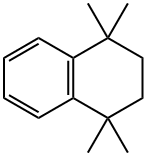
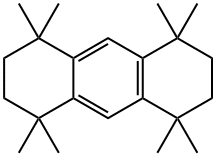
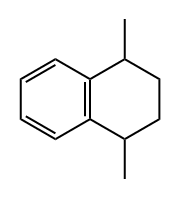
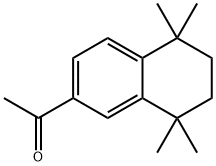

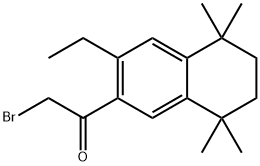


You may like
-
 Diisopropylbenzene (mixture of isomers) CAS 25321-09-9View Details
Diisopropylbenzene (mixture of isomers) CAS 25321-09-9View Details
25321-09-9 -
 3-(4-amino-1-oxoisoindolin-2-yl)-1-methylpiperidine-2,6-dione 98%View Details
3-(4-amino-1-oxoisoindolin-2-yl)-1-methylpiperidine-2,6-dione 98%View Details -
 614-19-7 98%View Details
614-19-7 98%View Details
614-19-7 -
 3112-85-4 Methyl phenyl sulfone 98%View Details
3112-85-4 Methyl phenyl sulfone 98%View Details
3112-85-4 -
 20677-73-0 (2,2-diethoxyethyl)methylamine 98%View Details
20677-73-0 (2,2-diethoxyethyl)methylamine 98%View Details
20677-73-0 -
 3-(4-(hydroxyamino)-1-oxoisoindolin-2-yl)piperidine-2,6-dione 98%View Details
3-(4-(hydroxyamino)-1-oxoisoindolin-2-yl)piperidine-2,6-dione 98%View Details -
 57381-49-4 2-bromo-4-chlorobenzonitrile 98%View Details
57381-49-4 2-bromo-4-chlorobenzonitrile 98%View Details
57381-49-4 -
 4,6-dichloropyrimidine-5-carbaldehyde 98%View Details
4,6-dichloropyrimidine-5-carbaldehyde 98%View Details
5305-40-8
